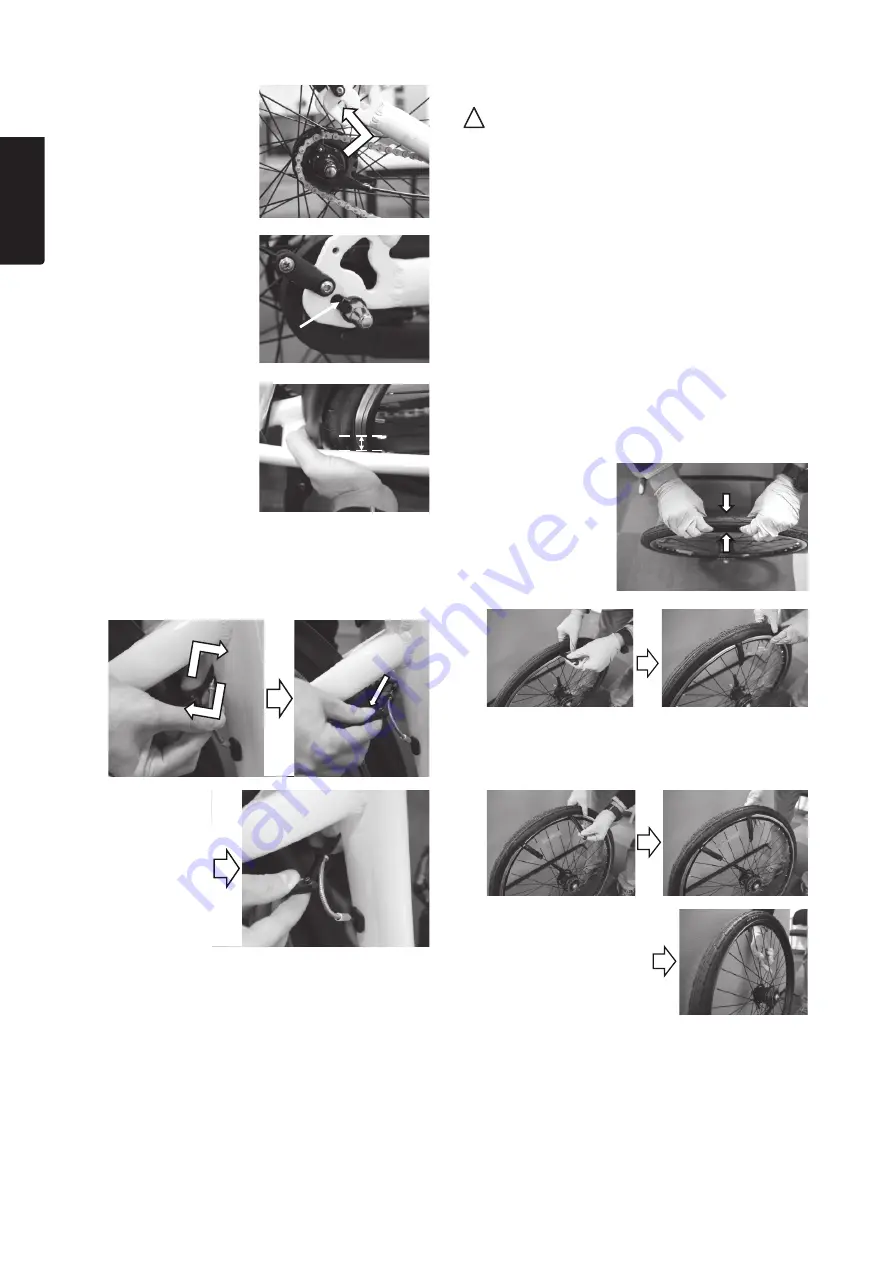
16
E
ngl
is
h
8. Centre the wheel
between the chainstays,
and lightly tighten
the wheel nuts.
6. Set the ends of the rear
fork against the wheel
axle, and ensure that
the washers inside
the wheel nuts are
on the outside of
the fork ends.
7. Pull the wheel
backwards so that
the axle partially slides in
between the fork ends.
Make sure that the tabs
on the washers
are inserted into
the fork ends.
9. Adjust the tension of the chain (see
Drivetrain
in
the
Settings and adjustments
section).
10. Tighten the wheel nuts securely.
11. Tighten the screw and nut on the brake stay.
Hub/wheel bearings
Important:
Adjustment of the wheel bearings requires specialist
knowledge and tools.
1. Lift the bicycle so that the wheel leaves the ground.
2. Take hold of the tyre/wheel and push it sideways in
short jerking movements.
3. Look, feel and listen to detect any looseness in
the wheel hub.
4. Spin the wheel and listen out for any unusual noise,
such as scraping or creaking.
5. Repeat this action with the second wheel.
If there is any looseness or creaking in the hub, this must
be corrected.
Removing the tyre and inner tube
Remove the wheel from the frame or front fork (see
Wheels
in the
Settings and adjustments
section).
1. Unscrew the valve cap and fully deflate the inner tube.
2. Squeeze both
sides of the tyre
together where it
meets the wheel
rim, and continue
around the entire
circumference of
the wheel.
12. Press the brake
arms in against
the wheel rim,
hook the cable
guide onto
the link, and
press the gaiter
into place.
13. Try applying the brakes and check that the brakes
work (see
Brakes
in the
Settings and adjustments
section).
3. At the point opposite the valve, insert a tyre lever
beneath the edge of the tyre. Prise up the edge of
the tyre and fix the tyre lever to one of the spokes.
4. Use an additional one
or two tyre levers at
intervals of 10–15 cm,
and continue until
the entire side of
the tyre comes away
from the wheel rim.
Summary of Contents for 31-9779
Page 2: ......
















































